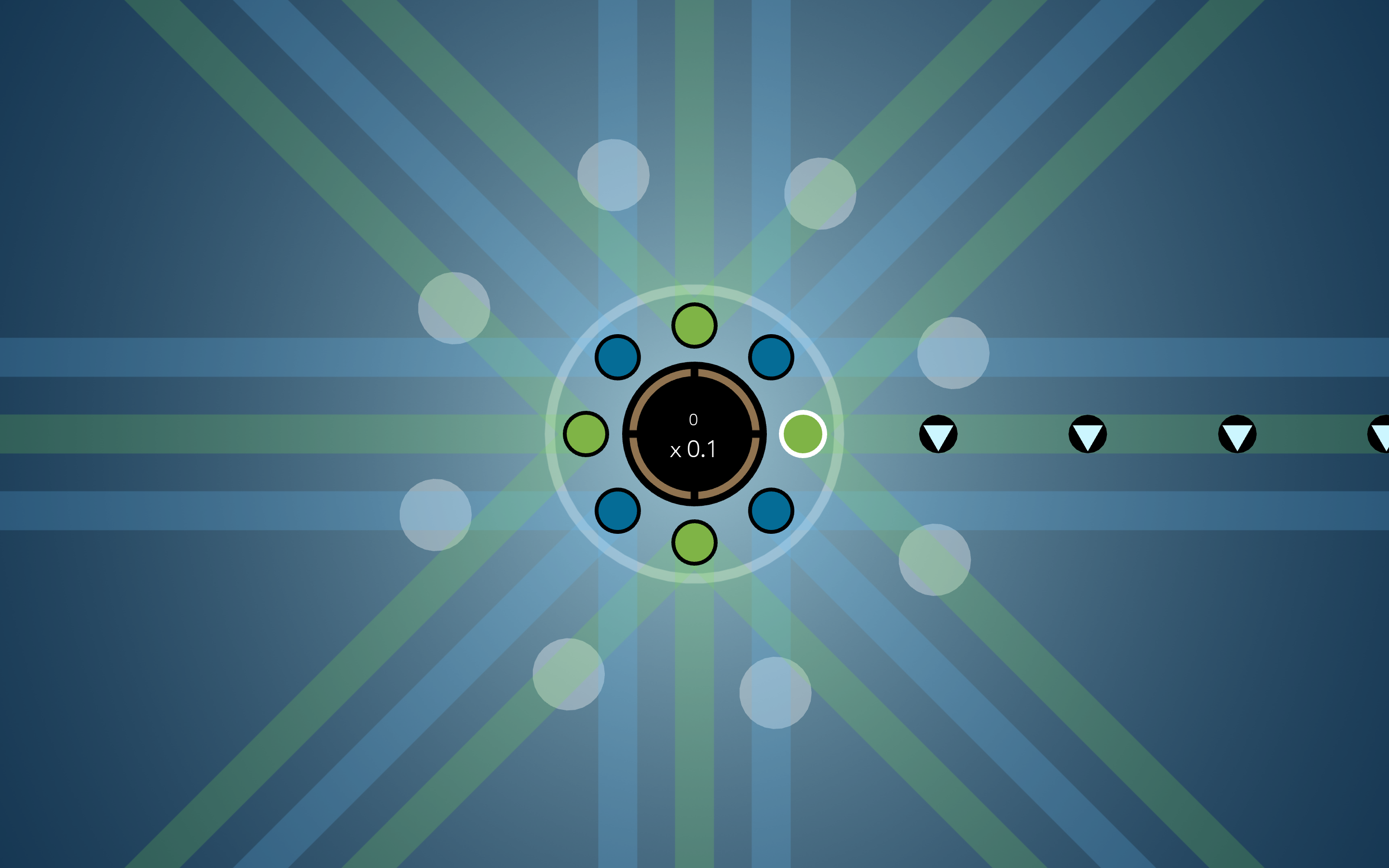In CMU’s Game Creation Society, members pitch their game ideas each semester, and other members join their teams to help develop the game before the game showcase at the end of the semester. During Fall 2019, I helped develop Octave, a 2D “multi-directional” rhythm game. It was designed to be played on the showcase arcade machine, as it would use joystick and button controls. The notes would move down different tracks, and players had to time button presses to successfully get points. The team lead wanted to use songs from previous or unfinished GCS games, as well as some original songs. He also decided that we would use LOVE2D and Lua to create the game.

There were several main parts of the game. The game had a menu screen that would show all of the possible songs in a scrolling fashion, similar to arcade games such as Dance Dance Revolution. The menu screen displayed information about each song, including all of the high scores for that song. The color scheme and background would also change depending on the song. The actual gameplay needed to generate note circles based on MIDI files, and the notes had to properly go down tracks towards the center. After the song is finished, there would be a screen showing the score and various stats, and the player would be able to enter their name to be recorded with the score. Players would enter their name one character at a time, similar to old arcade games.

I mostly worked on the game menus, in particular the song selection and the name selection interfaces. I discussed with the team lead and other members about the design of the menus and programmed the UI to fit them as desired. I had to ensure that the UI would properly display on different sized screens, and could be navigated using the joystick and button controls. I was also in charge of designing the database of the game. In the end, we had JSON files for each song to store the song information and the high scores. As such, I also had to work on writing to and getting information from these JSON files.
Aside from working on the menus, I also helped out with various game design discussions and software issues. I helped integrate many developers’ work by using Github and ensured there were no conflicts. For some time, I explored creating particle effects for when players successfully hit the notes. However, we didn’t have enough time to implement them, and I had to move to other work.
We were able to accomplish all of what we had wanted, including some reach goals, and had multiple songs. The game was well-received during the showcase. I enjoyed this project as this was one of the first times I worked on a game in a team, instead of by myself. I had fun collaborating with my teammates and meeting regularly to work together towards a final product.